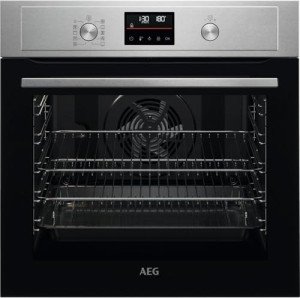Self-Cleaning Oven Improvements: Innovations for a Hassle-Free Cooking Experience
Ovens have progressed significantly throughout the years, and one of the most remarkable developments in cooking technology is the self-cleaning oven function. This development has drastically decreased the time and effort required to keep the tidiness of ovens. Nevertheless, advancements continue to be made, enhancing efficiency, safety, and benefit. image source will delve into the current improvements to self-cleaning ovens, discussing their features, benefits, and resolving typical concerns that users may have.
The Evolution of Self-Cleaning Ovens
The principle of self-cleaning ovens emerged in the 1960s, with early models utilizing heats to incinerate food residues. Over the decades, makers have presented different features and systems to boost the self-cleaning process. The 2 primary methods for self-cleaning are:
- Pyrolytic Cleaning: This method heats the oven to very heats (around 900 ° F or 480 ° C), efficiently turning food residues into ash that can be quickly wiped away.
- Steam Cleaning: A more contemporary approach that utilizes steam to soften food debris, making it easier to clean without the high temperature levels of pyrolytic cleaning.
As technology has actually advanced, producers have introduced numerous improvements to these standard techniques, improving both performance and user experience.
Recent Improvements in Self-Cleaning Ovens
1. Boosted Safety Features
Recent models of self-cleaning ovens have prioritized user safety with:
- Auto-Lock Mechanism: Ovens now feature auto-lock doors that engage throughout the cleaning cycle, preventing unexpected openings. This ensures that both children and animals remain safe from the extreme heat produced during cleaning.
- Cool-down Periods: Some ovens integrate a cool-down phase post-cleaning, lowering residual heat and making it much safer to open the oven door once the cycle completes.
2. Enhanced Cleaning Efficiency
Innovations have caused more efficient self-cleaning procedures:
- Dual-Clean Options: Many modern self-cleaning ovens allow users to select between high-temperature pyrolytic cleaning and lower-temperature steam cleaning, enabling them to choose the method that best fits the level of soiling.
- Targeted Cleaning Areas: Some ovens use localized cleaning zones, permitting users to focus on especially filthy areas without a full-cycle clean.
3. Smart Technology Integration
Smart cooking devices have made self-cleaning procedures more convenient:
- Wi-Fi Connectivity: Many ovens now include Wi-Fi connection, permitting users to start or keep track of the self-cleaning cycle through mobile phone applications, regardless of their place in the home.
- Voice Command Features: With the addition of voice-activated technology, users can release commands to begin a self-cleaning cycle, making the whole process hands-free.
4. Eco-Friendly Options
With ecological issues at the forefront, manufacturers have introduced:
- Low-Emission Cleaning Cycles: Newer ovens implement cleaning techniques that reduce harmful emissions and use less energy. This can consist of much shorter cleaning cycles or making use of biodegradable cleaning representatives in steam models.
- Self-Sustaining Systems: Some models integrate catalytic liners that break down grease and grime, suggesting they need less regular self-cleaning cycles.
5. User-Friendly Features
Boosted interface and use improve user experience:
- Touchscreen Controls: Many new models include user-friendly touchscreen displays for simple and easy operation with clearer feedback on cleaning status.
- Pre-Clean Notification: Some ovens send out suggestions when it's time for maintenance or suggest cleaning schedules based on usage patterns.
Benefits of Modern Self-Cleaning Ovens
Purchasing a contemporary self-cleaning oven provides a number of benefits:
- Time-Saving: The self-cleaning function decreases the requirement for manual scrubbing, releasing up time for the user.
- Convenience: With the capability to arrange cleansings and monitor them from another location, convenience has actually never ever been higher.
- Improved Hygiene: Frequent self-cleaning helps eliminate bacteria that might reside in food residues, causing enhanced food safety.
- Economical Maintenance: Maintaining an oven through self-cleaning avoids buildup that might affect its performance, extending its lifespan and reducing repair costs.
Regularly Asked Questions
How typically should I utilize the self-cleaning feature?
A lot of producers recommend utilizing the self-cleaning function every few months or whenever the oven is significantly filthy. Nevertheless, families that cook frequently may require to clean regularly.
Is self-cleaning safe for food preparation?
Yes, it is safe to utilize the oven for cooking after the self-cleaning cycle is complete. Ensure the oven has actually adequately cooled down to avoid burns.
Can I use industrial cleaners throughout self-cleaning?
Usually, it's best to prevent using business cleaners throughout the self-cleaning process, as they can produce harmful fumes when exposed to high temperatures. Always refer to the manufacturer's instructions.
What should I do if my oven doesn't clean properly?
If your oven stops working to self-clean efficiently, think about checking the door seal, making sure that the oven is empty before beginning the cycle, and referring to the user manual for fixing tips.
The developments in self-cleaning ovens have actually made them not only a practical device but an important tool for contemporary kitchen areas. With features that stress safety, efficiency, and intelligent technology, these ovens are created to streamline the cooking and cleaning process. As producers continue to innovate, welcoming these advanced models can considerably boost one's culinary experience while lessening the labor connected with preserving an oven's cleanliness. Buying a self-cleaning oven is not simply a step towards benefit however also a relocation towards a more effective and satisfying cooking environment.

